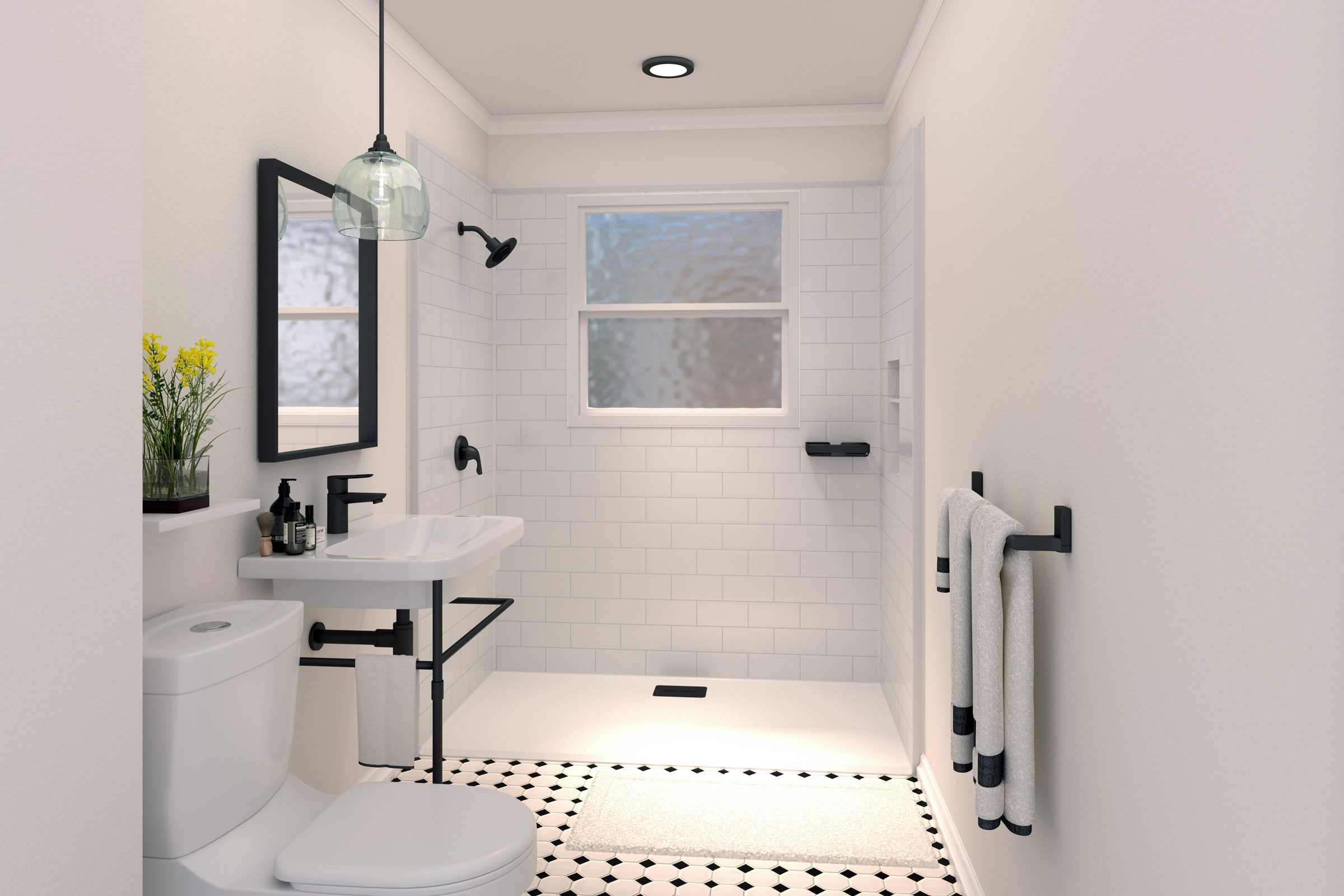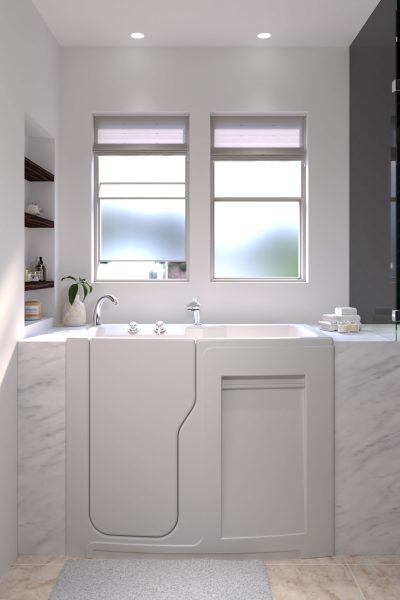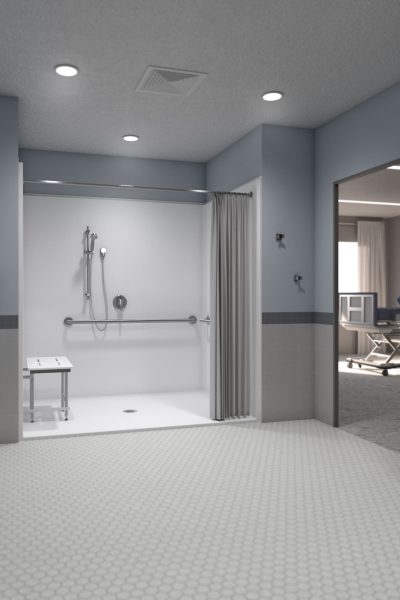Story at a glance:
- Accessibility is evolving beyond ADA checkboxes, focusing on user needs and aesthetics.
- Manufacturers like Bestbath are pushing boundaries with adaptable, high-weight-capacity seating and advanced drainage solutions.
- Architects and product designers are working together to create smarter, more functional spaces.
Accessibility in bathroom design is no longer just about checking off regulatory requirements. Architects and manufacturers are prioritizing user experience, aesthetics, and adaptability—ensuring that accessible spaces don’t just meet minimum standards but enhance everyday users’ quality of life.
“Early ADA codes were largely designed around the needs of Vietnam veterans,” says Amy Carpenter, principal at SFCS Architects. “But those standards don’t fully address the needs of aging adults, people with disabilities, or caregivers.”
Today’s accessibility solutions are being reimagined in settings like senior living, higher education, and health care. Manufacturers like Bestbath® are at the forefront, designing products that balance function and design. Whether in new construction or renovation projects, these innovations help create inclusive environments that cater to a broad range of users.
Designing for a Wider Market
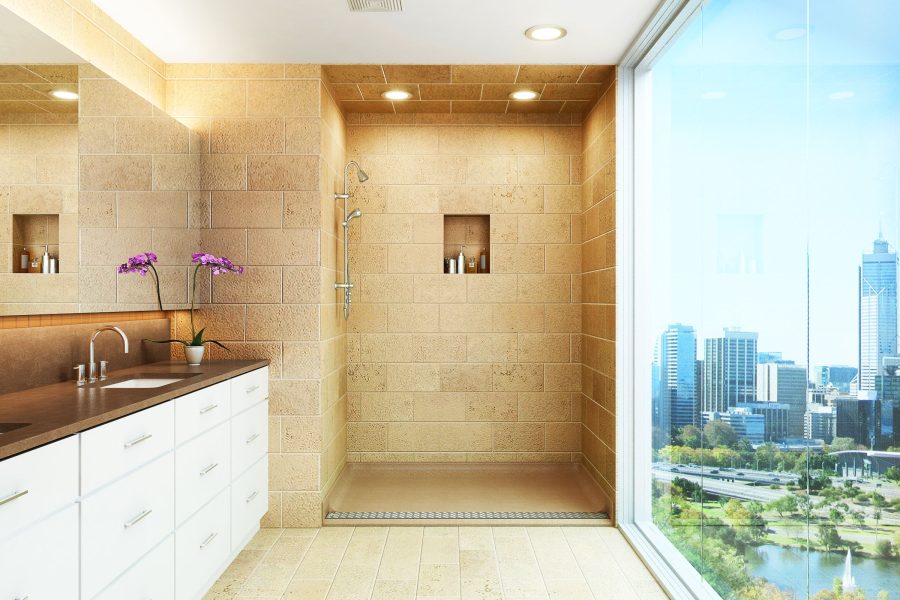
Photo courtesy of Bestbath
The accessibility market has expanded dramatically, not only in a variety of sectors but within a sector itself. For example, senior living is no longer a single category—luxury developments, workforce housing, and government-run facilities each have different priorities.
“Regardless of price point, accessibility should be built in from the start,” says Casey Conover, regional sales manager at Bestbath. “The level of materials may vary, but the functionality and layout need to work for all users.”
In higher education, institutions are rethinking accessibility for dormitories and campus facilities. For example, Conover says the Culinary Institute of America invested heavily in inclusive design, while Penn State took a more pragmatic, cost-conscious approach. Some universities are beginning to integrate accessibility into broader sustainability efforts, recognizing that long-lasting, adaptable design benefits both people and the environment.
“No matter the budget, the goal is the same—ensuring these spaces work for everyone,” Carpenter says. “A well-planned accessible bathroom enhances usability for all students, staff, and visitors.”
Functionality Meets Aesthetics
- Photo courtesy of Bestbath
- This rendering from Bestbath explores the possibilities for accessibility in a health care setting. Photo courtesy of Bestbath
Bestbath is among those manufacturers reshaping what accessibility looks like in real-world applications.
“We’re designing for real users, in real scenarios, not just code compliance,” Conover says. “It’s about making spaces that don’t just work but feel good to use.”
Some of the biggest advancements include:
Drain placement: Moving from front-drain to rear-drain showers, improving slope and water management.
Higher weight capacities: Bestbath now offers seating that supports over 1,000 pounds, far exceeding their former standard of 250 pounds.
Fold-down grab bars: A more functional alternative to traditional wall-mounted bars, offering flexibility and better user support.
“Adapting accessibility to aesthetics is critical,” Conover says, particularly for senior living facilities. “From aging-in-place to workforce senior housing, functionality and aesthetics need to match.”
Beyond product choice, thoughtful lighting, color contrast tiling, and non-slip surfaces contribute to accessible designs that feel warm and inviting rather than clinical.
Collaboration in Action
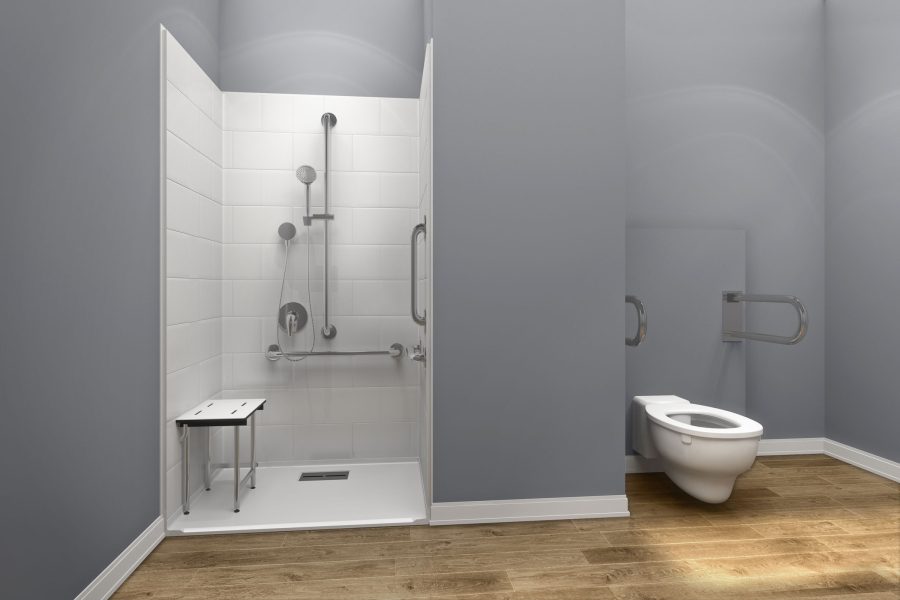
Photo courtesy of Bestbath
The best accessibility solutions stem from architect-manufacturer partnerships. Carpenter highlights a high-rise senior living renovation in Philadelphia where plumbing modifications were impossible due to structural constraints.
“Bestbath helped us design a custom shower pan that covered the entire bathroom floor, sloping strategically to a single drain,” she says. “That kind of problem-solving makes accessibility work in the real world.”
Such collaborations are essential in ensuring accessible design solutions work within real-world constraints, whether those are structural limitations, budget concerns, or a client’s aesthetic expectations. Manufacturers who work closely with architects and builders can develop better, more adaptable solutions that streamline installation and provide long-term benefits.
The Future of Accessibility
One of the biggest emerging changes? Adult changing tables.
Public restrooms, universities, and transportation hubs are beginning to require them, addressing a long-overlooked need. These tables provide a dignified, sanitary solution for caregivers assisting adults with disabilities. “This is about dignity,” Carpenter says.
“It’s a long-overdue change.” Some states are already integrating these requirements into building codes, and momentum is growing for national adoption.
We’re finally moving toward designing spaces that work for a range of people, rather than forcing people to adapt to the space.
Meanwhile, no-threshold, roll-in showers—once designed primarily for wheelchair users—are gaining popularity in hospitality and residential settings for their clean aesthetic and ease of use. Hotels and apartment developers are recognizing that accessible design is not just about compliance but also about creating desirable, future-proof spaces that work for a wide range of occupants. “A well-designed shower often defines an entire experience,” Conover says.
Looking ahead, industry experts see greater integration of universal design principles—accessibility that is seamlessly incorporated into the built environment rather than retrofitted as an afterthought. More municipalities and private developers are looking at how accessible features can enhance overall usability, making spaces safer and more comfortable for everyone.
“We’re finally moving toward designing spaces that work for a range of people, rather than forcing people to adapt to the space,” Carpenter says.
As architects and manufacturers continue to innovate, the goal is clear: Accessibility should be as functional, beautiful, and seamless as any other element of design. Well-designed, accessible bathrooms are no longer seen as a niche requirement—they are becoming a standard expectation in modern buildings, contributing to a more inclusive built environment for all.

